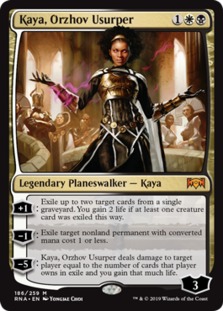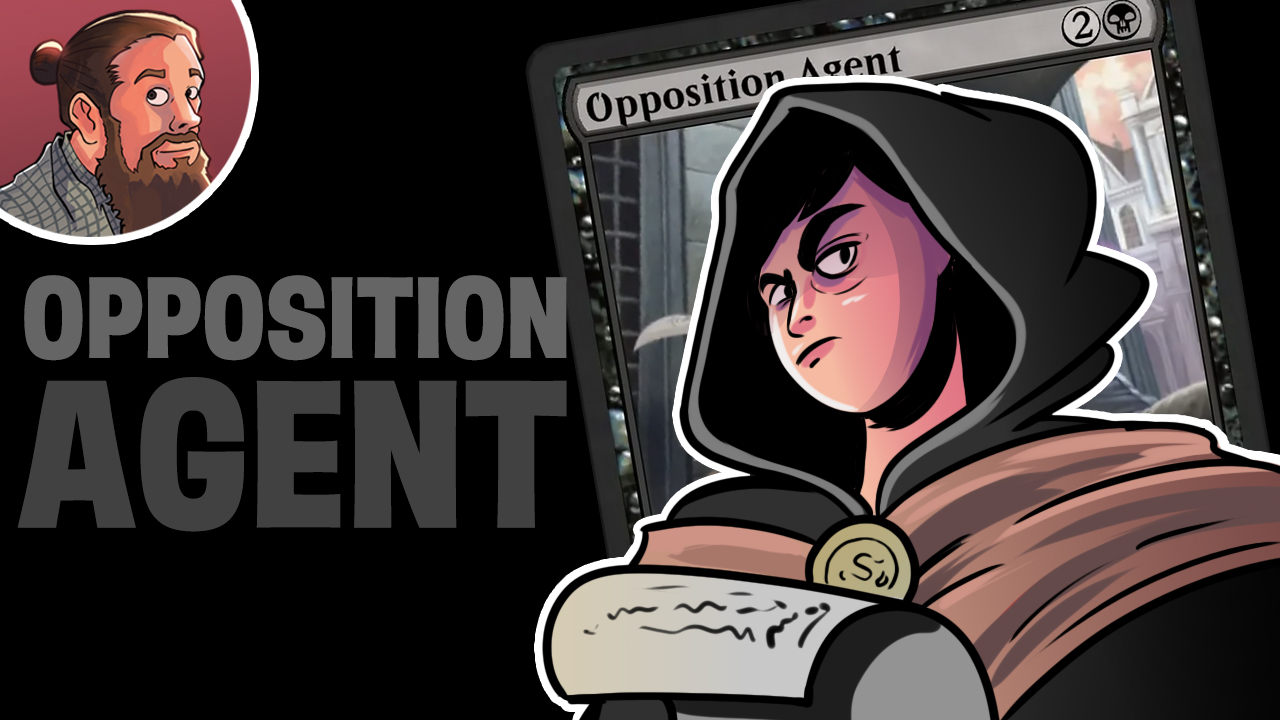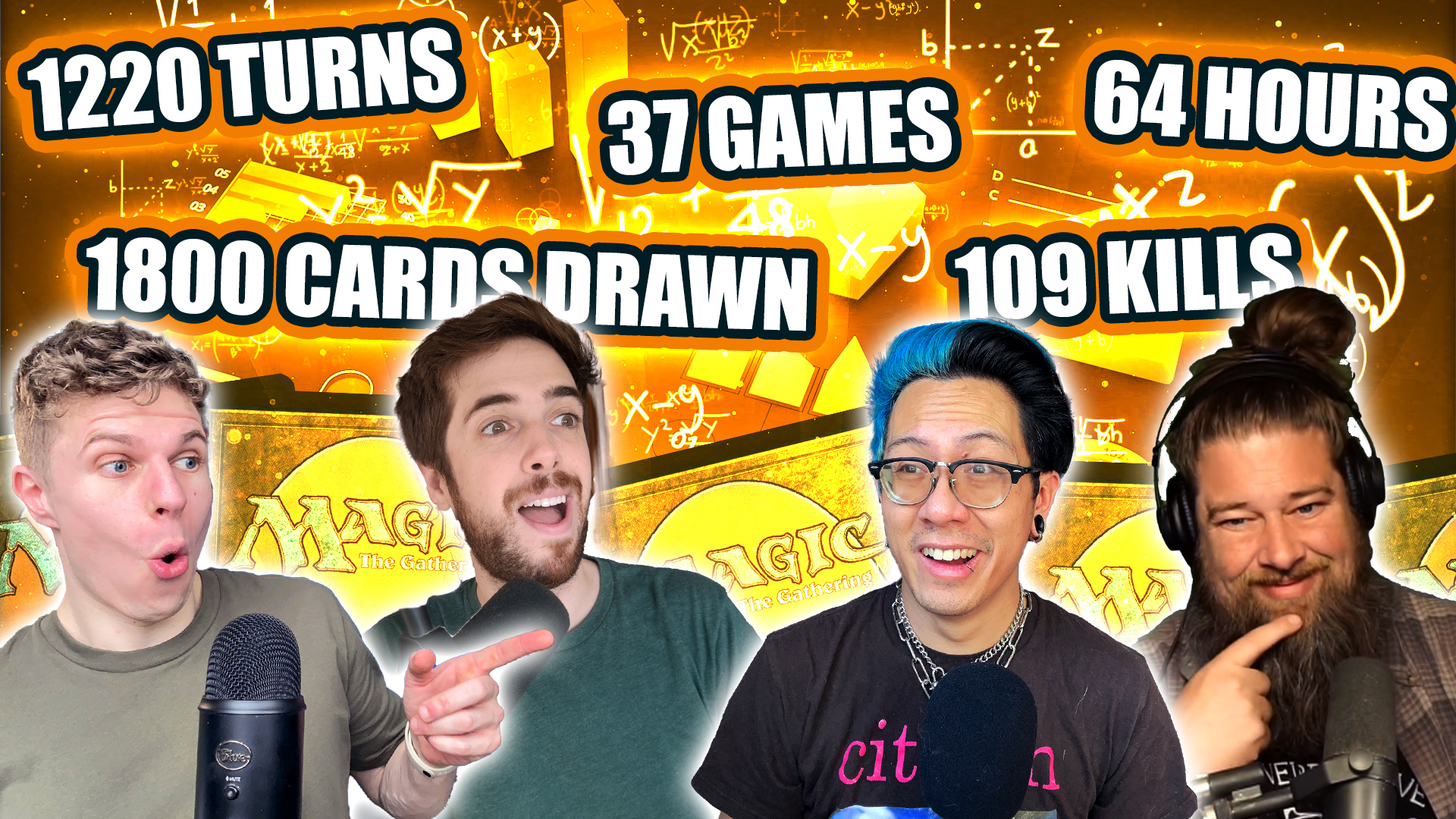The Beauty of Uncommon Planeswalkers
Planeswalkers are the most important card type in Magic. For the past several years, they have not only been essential for driving the lore and narrative of the game but have often been among the most powerful cards in a set or even a format. As repeatable, hard-to-kill value engines, there's no card type in Magic that can put away a game more efficiently than a planeswalker. In the world of removal spells, creatures, and other card types, we often talk about the power of two-for-ones and three-for-ones. Planeswalkers are often essentially X-for-ones, where X equals the number of turns you can keep them on the battlefield. Oh yeah, and your reward for X-for-oneing your opponent is eventually reaching the planeswalker's ultimate, which is usually strong enough to win the game (mostly) by itself, either right away or over the course of a few turns, with even more free value.
As such, one of the biggest questions about War of the Spark was how Wizards would manage to fit 36 planeswalkers into the same set without destroying both Standard and limited. Well now, two weeks into the three-week preview season for the set, we have our answer. While there are some normal-looking mythic planeswalkers, there are also rare and even uncommon planeswalkers. The uncommon planeswalkers specifically are extremely interesting in their design, with only one minus ability and a static ability, which actually makes them feel sort of like an artifact or enchantment that you can kill by attacking with your creatures or barraging with burn spells. While this might be a downside, at least in terms of raw power, in terms of game play, the uncommon planeswalkers from War of the Spark are some of the most interesting cards we've seen in a long time, essentially flipping the normal paradigm of planeswalkers on its head.



While I have very little doubt that planeswalkers have been very good for Magic overall, giving the game popular face characters to sell sets and keep players involved in the story and lore, planeswalkers traditionally come with a couple of really big downsides. First, planeswalkers are the most powerful card type in Magic and have been pretty much ever since they were first printed a decade ago. While the data are probably skewed by the fact that planeswalkers are almost always mythic (and mythics are the rarest and often most powerful rarity), if you simply take the number of cards of a certain card type in Standard and divide it by the number of that card type that is playable (or very good) in Standard, planeswalkers come out way, way above artifacts, creatures, enchantments, or any other card type. This is probably—at least, in part—because Wizards wants planeswalkers to be powerful, to help sell the set and drive the lore, but it is a little weird to see one card type be so dominant.
The second downside of planeswalkers is that while they are often exciting in terms of lore, flavor, and story, they are usually pretty boring on the battlefield. With most planeswalkers, it's always correct to activate them every turn—if you don't have anything better to do, you just tick them up—which mean turns and games often end up looking the same when a planeswalker hits the battlefield. Meanwhile, from across the table, many planeswalkers immediately become must-kill threats, so you have to play a sort of sub-game where you spend all your time and resources trying to get your opponent's Teferi, Chandra, or Jace off the battlefield, because if the planeswalker sticks around for more than a turn or two, you're likely to lose the game to snowballing planeswalker value.

The uncommon planeswalkers change the planeswalker math on both sides of the battlefield. While they can still be quite powerful, rather than creating redundant game play where one player ticks up their planeswalkers and the other player tries to kill it and whoever wins the subgame likely wins the actual game, there are actually a ton of interesting game play decisions to be made when it comes to the uncommon planeswalkers.



Take Tibalt, Rakish Instigator, for example. It's not a card that you'd want in your main deck in most metas since making two 1/1 Devils for three mana across two turns isn't really enough value in most matchups. But it can be extremely strong in certain matchups thanks to the static ability, which prevents lifegain (something that is very much a concern for decks like Mono-Red Aggro in Standard or Burn in Modern), making it a weird twist on powerful hosers like Everlasting Torment, Sulfuric Vortex, and even Rampaging Ferocidon. As such, with a card like Tibalt, Rakish Instigator, there's immediately some amount of tension in deck building as you have to decide whether the static ability is relevant enough in a large enough number of matchups to show up in your main deck or even in your sideboard. So unlike cards like Teferi, Hero of Dominaria or Chandra, Torch of Defiance, which you want in basically any deck in their colors, the uncommon planeswalkers present players with tough and interesting choices immediately, right from the start of the deck-building process.
More exciting is how a card like Tibalt, Rakish Instigator (and most of the uncommon planeswalkers) play once they hit the battlefield. For the first time in the history of planeswalkers, it will often be correct to not activate your planeswalkers. Since uncommon planeswalkers can't gain back loyalty (without outside help from something like proliferate), choosing to make a 1/1 Devil token is a real cost, lowering Tibalt, Rakish Instigator's loyalty and making it more likely that your opponent will be able to remove it (along with its static ability, which is likely the primary reason you are playing the card).



As a result, you'll have to make a decision each turn, based on the game state and matchup, as to whether it's more beneficial to make a 1/1 Devil or to keep Tibalt, Rakish Instigator's loyalty as high as possible, to make sure that the lifegain-fizzling static ability remains on the battlefield for as long as possible. It's pretty easy to envision games where you play Tibalt, Rakish Instigator and never activate your planeswalker a single time, using it as a sort of fragile artifact or enchantment to keep your opponent from growing their Ajani's Pridemate, gaining life with Leyline Prowler, or getting whatever lifegain effect happens to be popular in War of the Spark Standard.
The same interesting pattern is at play from across the table. With most mythic planeswalkers, you must kill them as quickly as possible or they will take over the game all by themselves in just a few short turns. With the uncommon planeswalkers, depending on the deck and matchup, it might be correct to simply ignore them, at least for a while, and trust that they are a problem that will take care of themselves. If you don't have any (or many) lifegain cards in your deck or hand, having a Tibalt, Rakish Instigator on the battlefield isn't all that scary—most decks can handle two 1/1 Devil tokens. It might not be worth investing resources to get it off the battlefield, at least right away. Sure, maybe you'll kill it eventually if the time is right, but the uncommon planeswalkers don't create the redundant and not-all-that-fun subgame that we see with cards like Teferi, Hero of Dominaria or Jace, the Mind Sculptor, where each turn they sit on your opponent's side of the battlefield, you feel like you are losing—and losing by a lot.



This play pattern holds true for pretty much all of the uncommon planeswalkers we've seen so far. While most are powerful, at least in specific decks and situations, they also feel like good cards rather than almost unbeatable threats. Cards like Ob Nixilis, the Hate-Twisted will win the game if left unchecked as an Underworld Dreams, but it's going to take a lot of turns for this to happen if you have a reasonable amount of life. Nahiri, Storm of Stone makes combat difficult and can potentially be a two- or three-for-one removal spell if things break right, but with some big bodies back on defense, you can sort of play around her power. Kiora, Behemoth Beckoner can offer a ton of card advantage as a Kavu Lair and maybe even extra mana if you can untap the right land (like Nykthos, Shrine to Nyx or Cabal Stronghold) but needs some very specific support cards to really be devastating. I could certainly imagine not attacking any of these planeswalkers, depending on the situation and matchup, and I could also imagine playing with all of these planeswalkers and choosing to not activate them for several turns in a row (or perhaps even an entire game) because the static ability is a bigger payoff than the minus.


These choices, forced on both players by the amazing design of the uncommon planeswalkers, are going to lead to some incredibly unique and fun game play. While powerful cards get all of the hype during spoiler season, being slightly less powerful is often a good thing when it comes to planeswalkers. I could go the rest of my life without seeing another "play Teferi, Hero of Dominaria, tick it up for four turns, ultimate Teferi" play pattern and be happy. Seeing a Jace, the Mind Sculptor come down and simply tick up until ultimate certainly isn't fun to play against, outside of a certain extremely Spikey sort of joy you get from knowing you're almost guaranteed to win the game.
And this is the problem with many traditional mythic planeswalkers: they are good, but they aren't actually all that fun or interesting. The best ones (like Teferi, Hero of Dominaria) are almost always correct to play in a deck featuring their colors, which pushes other potentially playable cards out of the format. Then, once they hit the battlefield, they end up being extremely redundant while also being annoyingly hard to remove from the battlefield, in many cases.
This isn't to say that we should never have powerful planeswalkers. There are always going to be best cards in Standard, and thanks to the inherent power of the planeswalker card type, those cards are going to be pushed planeswalkers a reasonable percentage of the time. The sad part is that pushed planeswalkers simply aren't all that fun, especially after playing against them (and watching them do the same thing game after game, turn after turn) for weeks, months, or even years before they rotate from Standard.


Likewise, in some ways, it is more about the design philosophy than the rarity. In fact, you can argue that Wizards started to change the design of planeswalkers a couple of sets back, with cards like Dovin, Grand Arbiter and Kaya, Orzhov Usurper. While both cards are mythic, the seem to fit the mold of planeswalkers as good cards for specific decks and situations, rather than all-powerful threats that every deck must play to compete. Both cards have the power to win games, but when they hit the battlefield, you don't get that sinking feeling that the game is essentially over (unless you can immediately answer the planeswalker) but you're going to have to play it out for a bunch more turns while your opponent slowly snowballs their planeswalker value into inevitability and eventually a game win.



The uncommon planeswalkers, on the other hand, seem surprisingly fun. Sure, if you only care about raw power they aren't as good as traditional mythic planeswalkers, but for perhaps the first time ever in the history of planeswalkers, they are cards that actually seem fun and interesting to not only play with but to play against as well. And outside of the purest of Spikes who only care about winning as efficiently and often as possible, it's fun and interesting game play that keeps most of us coming back to Magic, game after game, match after match, and set after set. From this perspective, you can argue that the uncommon planeswalkers are the perfect planeswalkers, so hats off to Wizards for taking a chance with what is perhaps their most iconic and important card type. After two weeks of War of the Spark previews and most of the uncommon planeswalkers spoiled, it seems like the risk payed off and will likely continue to pay off over the next year, with some really unique and fun game play in Standard.
Conclusion
Anyway, that's all for today. What do you think of the uncommon planeswalkers? Would Standard be better if most of the planeswalkers were similar in design, or would you miss having extremely powerful planeswalkers at the top of the format? Which of the uncommon planeswalkers are you most (and least) excited to play with? Let me know in the comments! As always, leave your thoughts, ideas, opinions, and suggestions, and you can reach me on Twitter @SaffronOlive or at SaffronOlive@MTGGoldfish.com.













